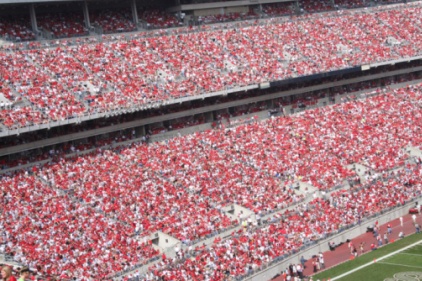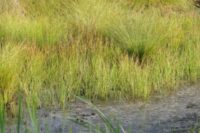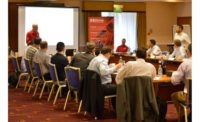 The range of industrial hygienists indeed reaches beyond industry gates, as shown by the sell-out audience that attended a full-day, for-fee course in community noise held during the Professional Conference on Industrial Hygiene held earlier this month in Baltimore.
The range of industrial hygienists indeed reaches beyond industry gates, as shown by the sell-out audience that attended a full-day, for-fee course in community noise held during the Professional Conference on Industrial Hygiene held earlier this month in Baltimore.
To participate, attendees had to be familiar with the use of a sound level meter, octave-band analyzer and basic noise terminology: weighted sound levels, decibel addition and octave-band frequencies.
Participant came away from the nine-hour course with these skills:
• Apply community noise concepts
• Describe the various types of federal, state and local noise regulations
• Conduct a community noise survey and determine compliance with applicable regulations
• Identify factors that affect outdoor sound propagation
• Predict the impact of new equipment, facilities or plant expansion projects on existing ambient noise environments and regulatory compliance
Factors and conditions affecting sound propagation outdoors were addressed. One workshop was on “Predicting sound levels at property line locations” and a second workshop showed how to conduct a community noise survey, interpreting survey data and determining regulatory compliance.
According to instructor Dennis Driscoll, PE, the U.S. Congress intended that states and cities retain primary responsibility for control of community noise when it passed the Noise Control Act of 1972. This has resulted in diverse noise regulations among local communities and states, as well as in many locations that lack noise ordinances. The widely varying approaches to regulating noise in communities poses a significant challenge to companies that operate multiple facilities, and to the people charged with the responsibility to assess compliance with those regulations. IHs need to evaluate community noise for several reasons:
• Compliance of noise produced by facilities operating in regions with local ordinances
• Determination of acceptable noise levels and noise characteristics for new equipment
• Evaluation of site suitability for a new facility
• Resolution of complaints from neighbors
The PDC materials are structured to enable IHs to meet unique survey needs. Various types of community noise regulation factors and conditions affecting sound propagation outdoors, instrumentation and survey procedures for measuring noise, and data interpretation will also be covered.


